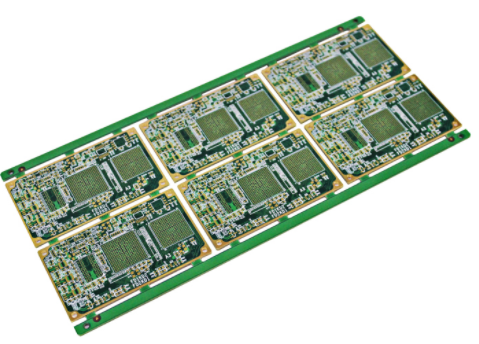What are the advantages of multi-layer PCB design
The traditional printed circuit board(PCB) is composed of a non-conductive substrate material (usually a glass fiber epoxy structure), which is paired with a layer of conductive elements (such as copper) on one or both sides (single-sided or double-sided). Electronic components are placed on the circuit board and soldered in place, connected by drilling or STM components. One or both sides of the circuit board can be used to mount components.
Due to the physical properties of these multilayer PCB circuit boards, the size of a particular circuit or application may result in the need for a large circuit board, or even the use of multiple boards. This is the emergence of technology and manufacturing technology that allows the manufacture of multilayer circuit boards, and is a major leap in the application of electronic products.
Multilayer PCB advantage
Multilayer printed circuit application circuit boards provide many strategic advantages for circuit board design engineers and product developers:
Space requirements-creating a multi-layer circuit board design means that the space in the product can be greatly saved by the advantages of this technology. Considering that adding layers only slightly increases the thickness of the PCB board(depending on the number of layers), the benefits relative to larger single-sided or double-sided boards may be considerable. This is essential for modern electronic equipment.
Weight: Just like the space advantage, combining the component layers into a single multi-layer card can provide circuit functions, and only a small part of the weight is better than the existing technology. Think about the advantages of using it in personal electronics, laptops, and flat-screen TVs.
Reliability: The structure of the multilayer circuit board helps to improve the reliability and consistency. The disadvantages of the multilayer PCB
It is as important as multilayer circuit boards to be able to develop high-performance, compact electronic devices, such as smart phones, military equipment, aviation instruments, etc., and trade-offs need to be considered when developing and using:
Cost: This is the primary consideration. With the special equipment required to manufacture multilayer PCBs, manufacturers must pass on this cost to customers, making PCBs more expensive than traditional circuit boards. Fortunately, with the increase in demand and the development of technology, this gap has been greatly reduced.
Design tools: Creating detailed technical designs for circuit board manufacturers means that design engineers and layout technicians must transition to complex software to help the design and manufacturing process. This requires training and a learning curve for designers.
Replacement: Due to the structure and complexity of multilayer PCBs, repairing faulty boards may be very troublesome if possible. In most cases, the failed circuit board causes the need to replace it instead of trying to repair it.

Multilayer PCB manufacturing precautions
Multilayer circuit board production is not available from all PCB manufacturers. As the percentage of circuit boards required to design multiple layers increases, the number of manufacturers is expanding. Although the process is relatively simple, it requires specialized equipment and attention to detail. With the improvement of quality, efficient production also requires technical training.
The manufacturing process involves constructing layers of conductive materials such as copper foil, core material and prepreg layers, clamping them together, heating and applying pressure at high temperatures to laminate the layers together. Heating can melt and solidify the prepreg material, and pressure can remove air pockets that may affect the integrity of the circuit board.
These processes require specialized equipment and a significant commitment to operator training, not to mention economic considerations. This explains why some manufacturers are slower to enter the multi-layer manufacturing market than others.
Support multi-layer PCB design technology
An important development that can create and integrate multilayer circuit boards into many industries and products is the creation of extremely complex software tools for use by design engineers, layout experts and manufacturers.
PCB design software promotes computer-aided design (CAD), enabling circuit designers to quickly improve efficiency, find errors or problem areas, and generate documents for manufacturers which are unlikely to be problematic for manufacturers. It can even analyze whether there is missing or incorrect content in the design file, avoiding traditional back and forth communication when creating problems or problems.
Design for Manufacturing (DFM) applications assist designers and manufacturers to verify the manufacturability of the final design through analysis functions. If there is no DFM tool, the PCB design can be manufactured to the manufacturer, finding that the PCB will be impractical, costly, and even impossible to build as designed.
Computer Aided Manufacturing (CAM manufacturers use software to verify and automate the actual manufacturing process.
These complex tools combine to make multi-layer PCB design and manufacturing more efficient, simplifying the process flow from start to finish. The result is a more reliable, lower-cost multilayer circuit board, and improved project schedules.